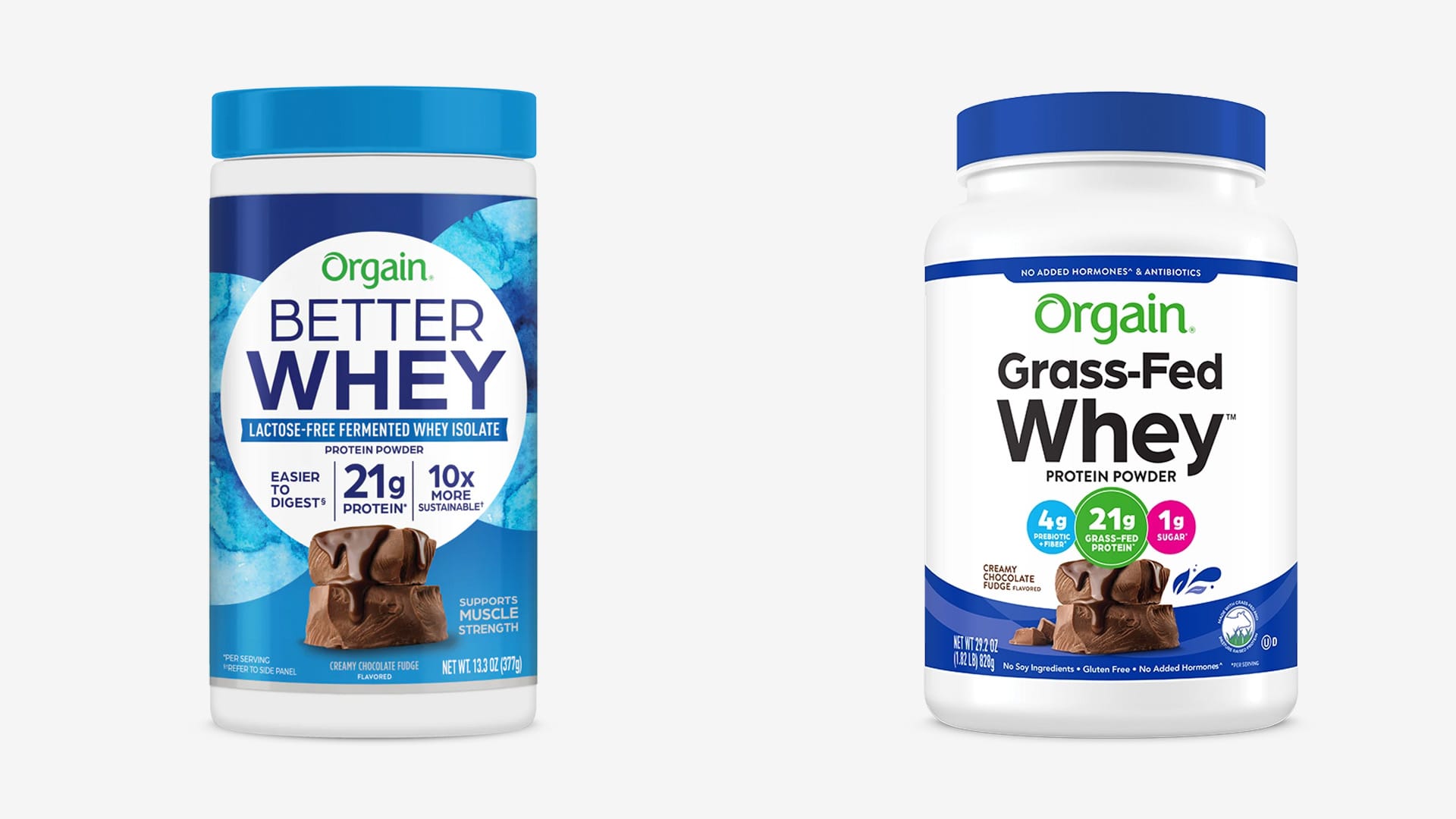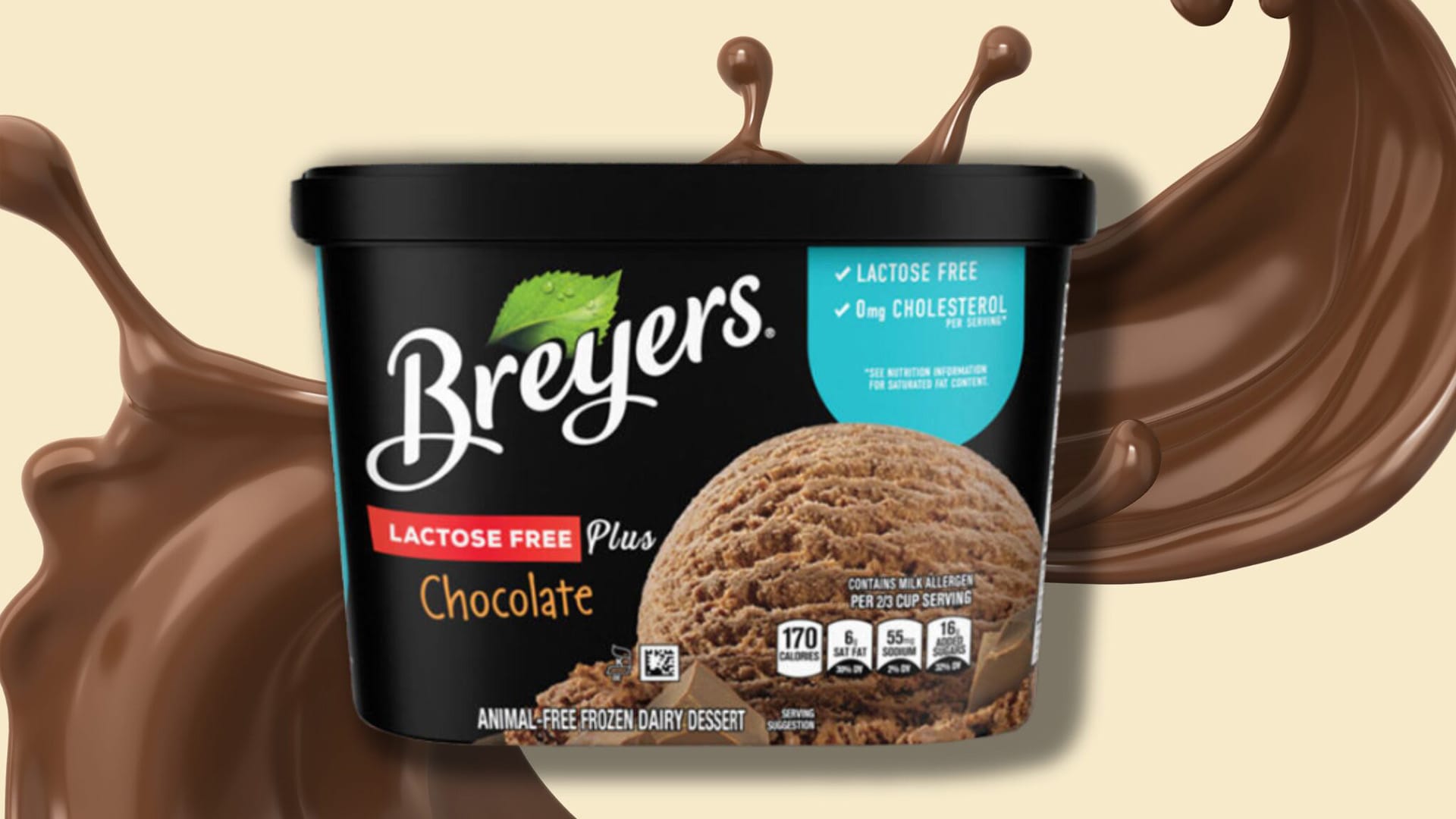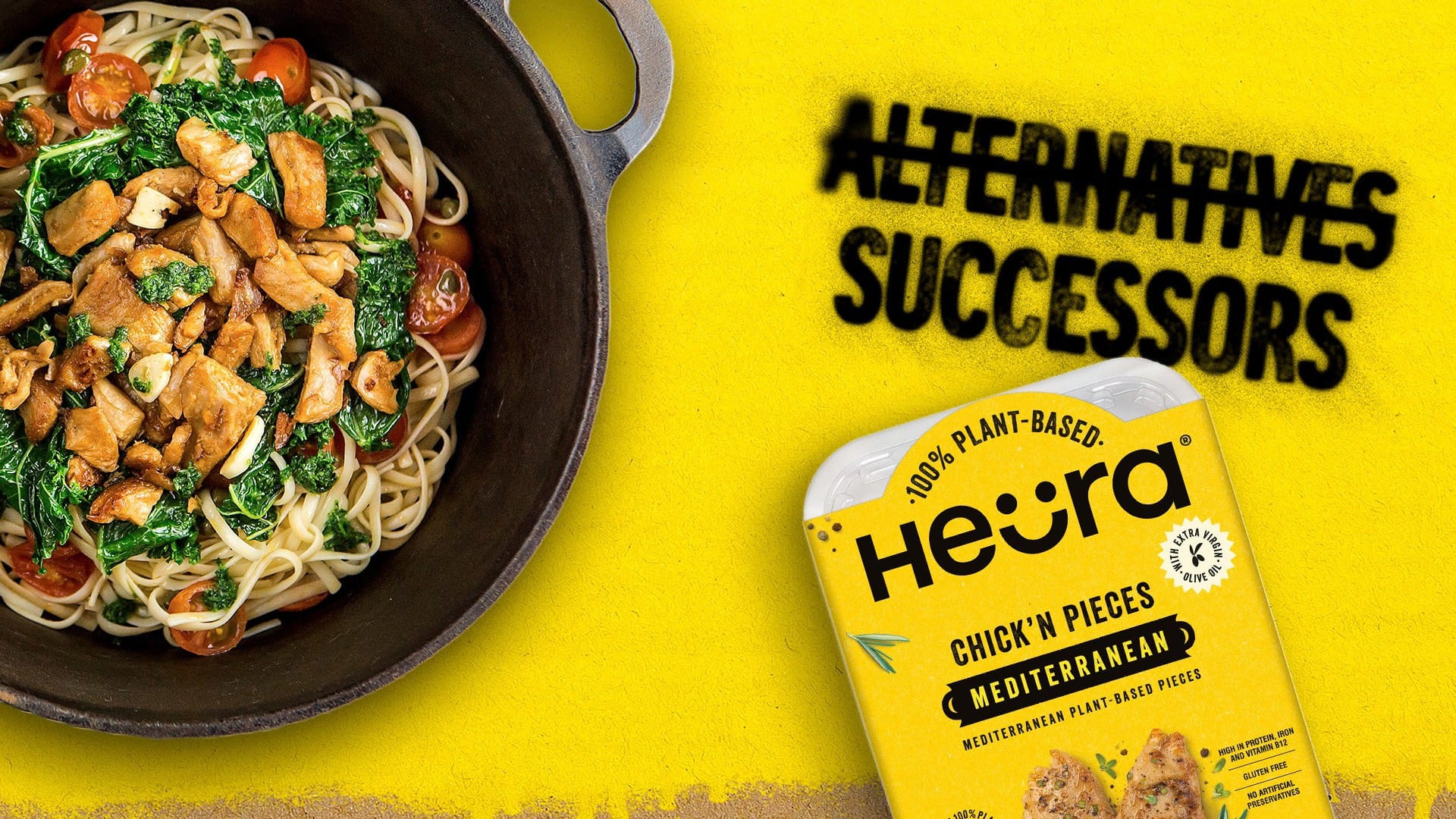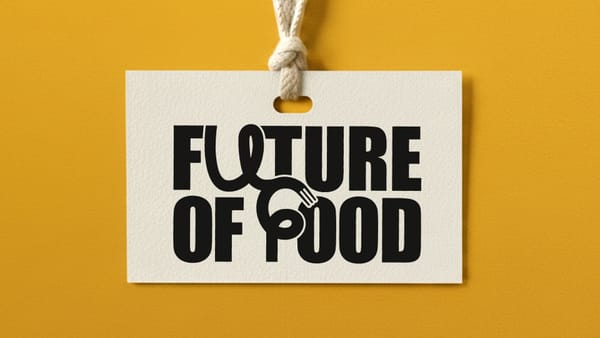UNSTUCK 004: The Quarterly Crit with Orgain, Breyers, Oatly & Heura
Learn from meh corporates, Heura getting it right, and Oatly on thin ice.

In creative agencies crits (short for critiques) play a central role in the development of ideas. People from different disciplines come together to analyze a design and offer feedback on how to make it better. It’s often during these sessions that new connections are made and big ahas happen.
In this spirit of constructive feedback we’ll be reviewing the most notable sustainable food launches of the quarter here at UNSTUCK. We, Jen and Zoran, will each give a thumbs up or thumbs down to a particular brand launch. Sometimes we’ll agree, sometimes we won’t, but importantly we’ll always identify what we believe is working well from our experience leading food brands and designing brands and what we suggest could be done better.
Here’s the inaugural batch that caught our attention this quarter.
Orgain Better Whey 👎👎
Where’s the reason to pay almost double?

In February Orgain (owned by Nestle) launched their first foray into precision fermented protein powders in the US with Better Whey. Described as a lactose-free fermented whey isolate protein powder with 21g protein, which is easier to digest and 10x more sustainable. Better for you. Better for the planet too.
At face value it doesn’t look that different to their mainstream grass-fed whey protein powder, which is a good thing from a brand consistency perspective. But there’s a fundamental problem here that has led us to give the launch a double thumbs down – it’s unclear how Better Whey is actually better.
At $29.99 for 13.3oz ($2.25/oz) Better Whey is almost twice the price of grass-fed whey at $39.99 for 1.82lb ($1.37/oz). There’s nothing wrong with premiumising within your brand portfolio, but the justification for the premium is missing.
The main reason people buy protein powder is, unsurprisingly, protein for their muscles. The 21g of protein per serving is identical to the grass-fed sister product at half the price, and the somewhat vague ‘supports muscle strength’ is almost lost.
Most whey protein isolates, which Better Whey is considerably more expensive than, have little to no lactose in the final product. So unless you have a very strong lactose intolerance, the lactose-free benefit is not a point of difference. Easier to digest could be a strong claim, but it also is somewhat lost compared to the impactful trio of call-outs on the grass-fed pack.
Finally 10x more sustainable is a great claim, but the majority of consumers will not pay for it.
Testing products in the market for niche consumer pick-up and feedback whilst waiting for precision fermented prices to come down is not a bad strategy for Nestle to be following. They are learning, which is what big companies need to do to build their confidence in precision fermentation solutions. But they could be doing so much more in understanding what their consumer is looking for in premium protein powders, working with their supplier to deeply understand the benefits of precision fermented powders (beyond sustainability and lactose-free) to deliver those, and then talking to the emotional as well as rational consumer motivations through their packaging.
We predict this will quietly disappear after the limited trial, in the same way Cowabunga from Nestle did.
Breyers Animal-Free Ice Cream 👎👎
Plus what?

Continuing on the lactose-free theme we have … drum-roll … lactose-free plus from Breyers! If you buy lactose-free ice cream, a specific range of ice creams made with lactose-free milk, as opposed to plant-based, you can now do so PLUS. But plus what?
0mg of cholesterol apparently. However in a category driven by indulgence, cholesterol is not a key top of mind factor when picking up a tub. Of course it’s nice to know, and for those looking for lactose-free, 0mg cholesterol might help make their ice cream treat a bit more permissible. So maybe they’ll pick this one up instead of their usual lactose-free purchase. But will it bring new consumers into lactose-free ice cream? We predict not. The pricing is currently unclear, but if it’s meaningfully more expensive than their usual lactose-free option in a moment of indulgence few will pick up the bill for 0mg of cholesterol. Two thumbs down from us.
Unfortunately this type of launch is to be expected from another big corporate, Unilever, the owner of Breyers. Ice cream is almost an $8bn business for Unilever globally. They have expressed interest in precision fermentation for some time, acknowledging that how to position it to mainstream consumers was a key challenge. Unilever is a breeding ground of talented marketers that can certainly figure out a compelling consumer proposition. But once it goes through the multiple layers of approvals and corporate innovation funnels it gets watered down to a low risk approach such as the resulting Lactose Free Plus launch.
This presents a huge opportunity for the younger, innovative, market challenging small players to take the lead and bring exciting consumer propositions to market. Unilever would far rather let them do the hard yards, buy them down the line, and then execute a ‘de-risked’ approach onto their core, valuable, highly profitable brands like Breyers.
Oatly Unsweetened & Super Basic 👍👎
The revolution will be incrementalized

Here’s one where the two of us disagree. The latest Oatly line extensions get a thumbs up from Jen for acknowledging the commercial reality of the market, and a thumbs down from Zoran for watering down the essence of the brand.
The argument for 👍 is that this is a sign of Oatly ‘growing up’ in the category. A firm challenger position will get you so far, but if you really want to be a significant player in the milk category, not just the alt milk category, you have to start playing to some of the rules of the game. This includes listening to your consumers, why they stopped buying you or have never bought you, and what would change their minds. Sugar content and the lack of ‘clean labeling’ are the two major consumer gripes with oat milk, now that they’ve broadly solved for taste, texture and functionality. With the right barista an oat milk cappuccino is damn good.
So this is a natural next step for the brand to address these concerns. Pricing is the same across the range, so there is likely a taste difference which is why these changes haven’t been made on the core product. That and expanding your range, offering more choice and having more shelf space in-store is something every brand looking for incremental growth wants to do.
The argument for a 👎 goes to the core of Oatly’s rebrand, arguably the most successful turnaround in the history of alt protein, which was built on the idea of a fearless revolution for the good of the universe. Internal slides literally describe the brand as “fucking fearless” vs. most companies that are “scared shitless”, and “good” vs. the evil incarnate of Monsanto.
Herein lies the problem. Billed as the first major innovation in five years, the new variants are a yawn. “Wow no cow” graffitied on the side of a building makes sense – “Wow a bit less sugar” does not. The Shock & Awe brand code is great at garnering attention, but staying true to it requires permanent revolution which has not worked out for anyone since Stalin had Leon Trotsky executed with an ice axe.
The latest brand extensions make Oatly feel like any other conventional brand, eroding its hard won uniqueness. Why not just pick up a Chobani Zero Sugar Oatmilk or move onto the next hipster brand that hasn’t sold out to a PE firm yet?
Heura 👍👍
The Mediterranean as it should be

While not strictly a launch, Heura has been making the headlines earlier this year with their record raise in the middle of an alt protein funding winter. In our view this wouldn’t have happened if they didn’t get so much right on the marketing front deserving a clear two thumbs up.
What we’ve liked about Heura for a while is that their branding is rooted in embracing the core of the category, not just rebelling against it. The founders make this explicit in a recent interview where they say that while activism for animals and the environment is important, consumers come into the category for different reasons that are much more about taste and health.
There’s lots to love in the way that fundamental belief has translated into Heura’s branding. The messaging is about successors not alternatives. The color codes are optimistic yellows, not greens. The imagery is about appetite appeal, not activism. The storytelling is about Mediterranean provenance, not tech. The ingredients are about extra-virgin olive oil, not some magic molecule. Just as they should be.
Our only quibble is perhaps with the name itself, especially as it travels beyond the Spanish-speaking world. We had to ask a former colleague based in Spain to help us figure out how to say it, which she kindly did via a WhatsApp recording (the H is silent apparently). Now imagine a dad at Tesco in Manchester asking where the Heura is for his daughter's lunch. A solvable problem with enough marketing spend, or a gentle intervention on the name at an early stage.






